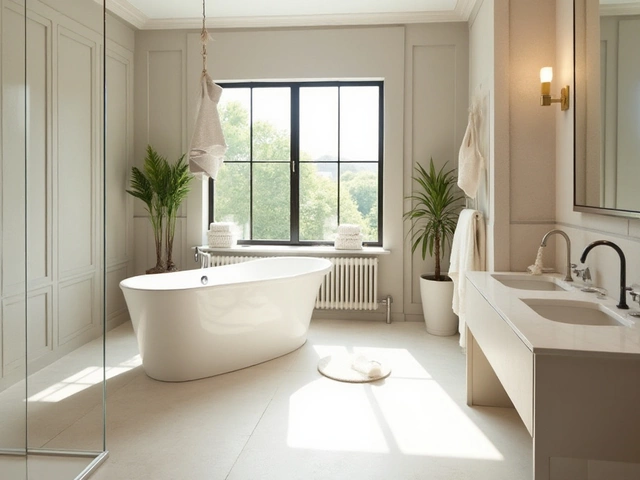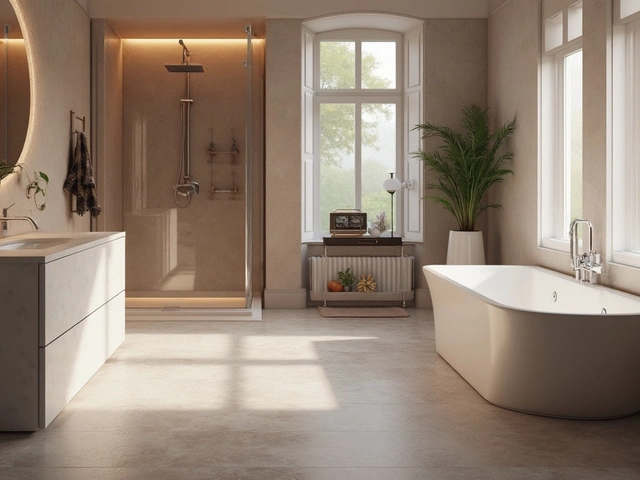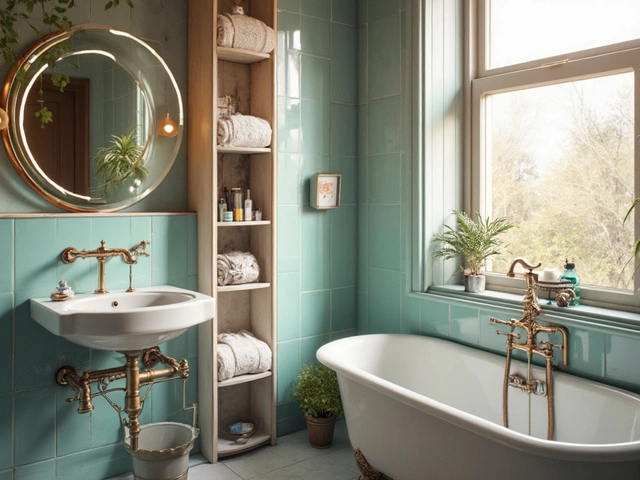Discover the Best Places to Store Your Vacuum Cleaner
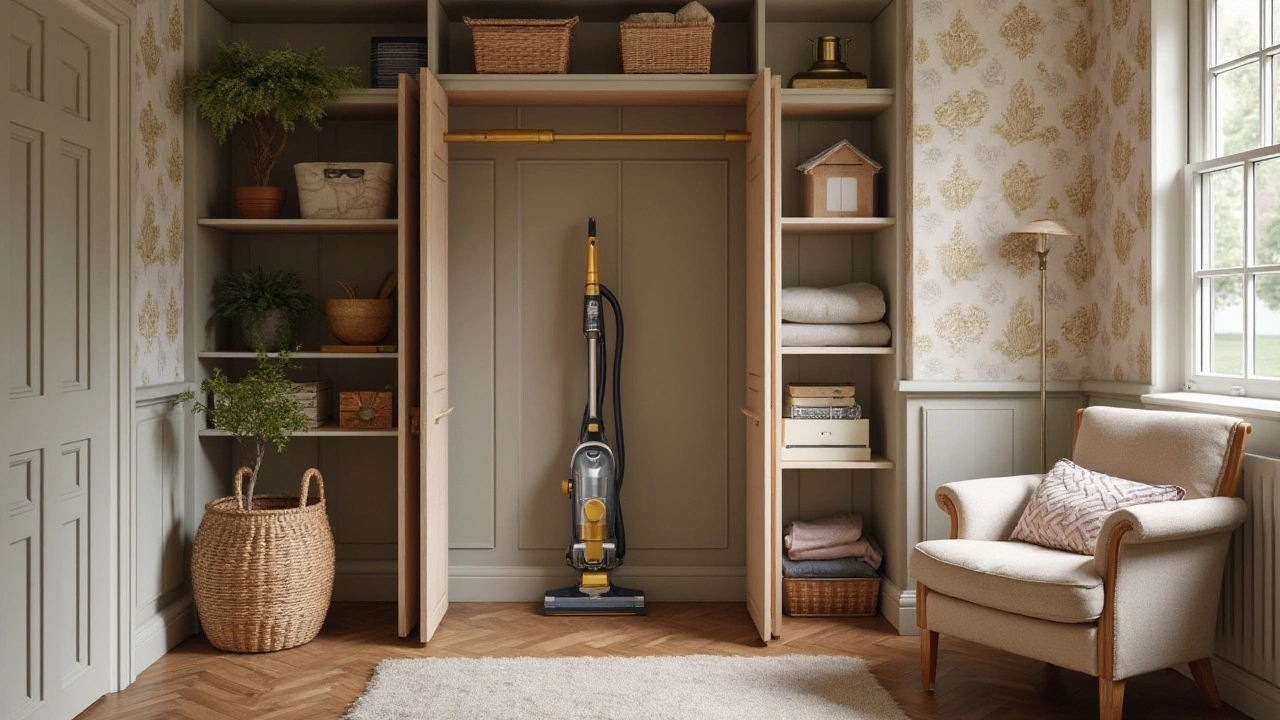
In every household, finding the perfect spot to store a vacuum cleaner can seem like a challenging puzzle. It's often large, awkwardly shaped, and not exactly pleasing to the eye. Yet, it’s a tool that's indispensable for maintaining clean and comfortable living spaces. Whether you're living in a cozy apartment or a spacious house, the key to hassle-free cleaning lies in how easily you can access your vacuum cleaner.
Let's get creative and practical about storing this essential appliance. From utilizing under-stair spaces to cleverly hiding them in plain sight, there's an array of solutions that cater to your home’s layout and design sensibilities. By exploring these storage ideas, we aim to inspire a tidy home environment while ensuring your vacuum is always within arm’s reach when those unexpected spills happen.
- Common Storage Spots
- Creative Storage Solutions
- Space-Saving Tips
- Choosing the Right Spot
- Maintaining Vacuum Accessibility
- Storage Mistakes to Avoid
Common Storage Spots
Finding the right place to store your vacuum cleaner can sometimes feel like fitting a jigsaw piece into an unseen puzzle. Many households default to the trusty utility closet as their first choice. It's typically roomy enough to accommodate a vacuum cleaner of most sizes and offers the added benefit of housing other cleaning tools, keeping everything neatly in one place. Often situated near the kitchen or living spaces, utility closets transform into a bastion of convenience when mid-cleaning impulses strike.
Another popular choice is the area under the stairs. This space, often underutilized, proves to be a clever and resourceful way to tuck away your vacuum cleaner without cluttering prime living spaces. Many modern home designs leverage this architectural space specifically for storage, installing shelves or custom compartments to maximize utility. “Making use of under-stair spaces for storage is not just a wise choice, but a chic one,” noted interior designer Kelly Hoppen in a recent interview.
For homes where utility and staircase storage aren't feasible, another practical spot is in the garage. With plenty of space to store other cleaning supplies and even gardening tools, the garage becomes an extension of household storage. The drawback, however, lies in accessibility, particularly if it involves stairs; having to lug a vacuum upstairs may deter frequent use. A viable alternative might include mounting lightweight shelves or wall hooks to keep the vacuum upright and easily reachable.
While a dedicated cabinet is less common, especially in open-concept homes, some architects have begun incorporating built-in cabinets with sleek doors that conceal cleaning appliances stylishly. This is a perfect solution if you aim to maintain minimalist decor while still ensuring all tools are at hand and ready for action. Built-ins or wardrobes equipped to handle vacuums present an appealing blend of form and function.
In more compact living environments like apartments, clever use of the bedroom wardrobe can be a lifesaver. By partitioning a small section or using vacuum bags equipped with rolling features, storing in wardrobes can strike a balance between discretion and accessibility. It’s an especially great solution for those who value a minimalist aesthetic without sacrificing utility.
These storage solutions consider space, ease of access, and the aesthetics of living areas—crucial elements when choosing where to place your vacuum cleaner. With a little creativity, the right spot can transform storage into more than just a necessity; it becomes part of an efficient, organized lifestyle.
Creative Storage Solutions
When it comes to finding places to store your vacuum cleaner, thinking outside the box can turn what seems like a storage dilemma into a source of satisfaction. The first step is embracing the nooks and crannies of your home that often go unnoticed. Many homeowners have found success by utilizing under-stair storage, which is frequently underutilized space. By installing custom shelving or even a small closet, the vacuum can be neatly tucked away. The beauty of such a solution is that it capitalizes on space that typically sits empty, transforming it into a practical hideaway for cleaning tools.
Another inventive approach is to repurpose an old armoire or wardrobe, turning it into a dedicated cleaning supply cabinet. With a bit of creativity and perhaps some DIY effort, these pieces of furniture can be adapted to house your cleaning tools like vacuums and brooms alongside other household essentials. The addition of hooks on the inner side of doors for cords or dusters maximizes the space. Additionally, incorporating small baskets or pull-out bins can help organize vacuum accessories, keeping everything tidy and at hand. This solution not only declutters but adds a personalized touch to your home organization.
For the tech-savvy household, incorporating hidden charging stations for cordless or robotic vacuums is a clever way to keep messes at bay without sacrificing aesthetics. Concealing the vacuum storage behind a panel in the kitchen or laundry room means always having it ready for a quick clean, while the charging station ensures it’s constantly at full power. This integration can be done subtly, matching the cabinetry to the existing design, thereby blending functionality with style. As the saying goes, "A place for everything and everything in its place," underscores the importance of thoughtful design and planning in storage solutions.
For those who appreciate multifunctional furniture, there's no shortage of innovative products designed with storage in mind. Footstools, benches, or ottomans with hidden compartments can store smaller vacuum models or handheld options. Incorporating these pieces into your home not only addresses storage needs but offers additional seating or surface area. Imagine lifting the seat of a quaint hallway bench to reveal a vacuum cleaner snugly tucked inside. Such dual-purpose furniture is ideal for conserving space in apartments or smaller homes where every square meter counts.
For families who are often on the go, having a predetermined spot for the vacuum in a utility room or mudroom is beneficial. Installing a set of shelves and hooks turns this entrance into the perfect spot to house cleaning essentials, ensuring they don’t stray into the living areas. Keeping these frequently used items near the home's entrance means easy access after a muddy walk with the dog or a busy day in the garden. This not only keeps the rest of the house tidy but also streamlines your cleaning routine, allowing for more quality time with loved ones and less hassle keeping the home spick and span.

Space-Saving Tips
Finding space for a vacuum cleaner in a home often requires creative thinking and a willingness to utilize every inch efficiently. One of the most effective strategies is optimizing vertical space. Think tall cabinets or shelving units in utility rooms where the vacuum can sit snugly, possibly alongside other cleaning tools. Hooks can be mounted on the inner sides of doors to hang vacuum hoses or attachments, freeing up floor space while keeping everything organized and within reach. Don't overlook potential storage rooms on walls that might otherwise go unused, as this can turn awkward corners or blank spaces into practical solutions.
Another tip is making your vacuum part of the decor, especially if it has a sleek design. Storing it in plain sight might sound counterintuitive, but in a well-organized room, a vacuum can blend in seamlessly with the surroundings. Consider placing it at the edge of a well-arranged bookshelf or in an open, accessible corner of the laundry area. Adding visual harmony with nearby items like brooms or mops in matching colors can reinforce this visual trick, creating a cohesive look that's both functional and aesthetically pleasing.
The use of multi-purpose furniture can also be a game-changer. Think of a storage bench with a hinged seat that opens up to reveal a dedicated compartment for the vacuum cleaner. This not only provides a convenient hiding place but also offers additional seating or surface area for other activities. Similarly, ottomans or footstools with hollow interiors can secretly house your vacuum, turning them into dual-purpose items that save space and serve your living area in more ways than one.
According to Marie Kondo, "The question of what you want to own is actually the question of how you want to live your life." This insight emphasizes the importance of living an organized lifestyle that maximizes both space and utility.
For those with stairs, the space beneath can be particularly valuable. Using under-stair drawers or built-in cupboard spaces can transform this often-wasted area into a fully functional storage solution. The sloped ceiling of an under-stair area is perfectly suited for the upright storage of vacuums, allowing easy access without inconveniencing the flow of the hallway or room.
Lastly, let's talk about retractable units. While not everyone may have the willingness or budget to install these, retractable vacuum units can be installed inside bespoke cabinetry. They offer the convenience of quickly pulling out the vacuum when needed and easily storing it away with the push of a button. This is especially favorable in kitchens or utility rooms where maximizing clutter-free space is crucial.
Choosing the Right Spot
Deciding where to store your vacuum cleaner is more than just an afterthought; it can significantly impact the efficiency and organization of your home. The first step in this quest is considering the layout and flow of your living spaces. You want to find a location that is not just convenient but aligns with the natural pathways in your home. For instance, storing your vacuum near the high-traffic areas makes quick cleanups a breeze. It reduces the hassle of hauling the vacuum across rooms and ensures it's always on standby for those last-minute dusting sessions before guests arrive. You'd be surprised how much a strategically placed cleaning tool can make home maintenance seem less daunting.
Size and storage requirements are crucial factors in this decision-making process. Modern vacuum cleaners come in all shapes and sizes, from upright models to canister and even handheld varieties. Knowing exactly the type you're dealing with allows you to tailor your storage solution accordingly. Upright vacuums usually have a compact profile that slides seamlessly into narrow gaps, like the crevice between your washing machine and the wall. Canister models might require a bit more room, often best accommodated in spacious cupboards or closets. For every type, ensure you have a dedicated spot that doesn't require shoving it into a tight space, potentially causing damage over time. A pro-tip to remember: maintaining the vacuum's physical integrity is as important as having it ready to use.
"A place for everything and everything in its place," is a classic wisdom that brings harmony into home organization — Benjamin Franklin.
Adapting to available spaces creatively can be a game-changer. Consider spaces that are usually overlooked, like under the stairs. This area can be transformed into a mini-storage haven for household items. By installing simple shelving or brackets, you can keep your vacuum upright and ready for action without it being the first thing anyone sees. Built-in cabinetry is another excellent option if you're keen on keeping things out of sight. Custom-built solutions may require an initial investment but provide long-term benefits in the form of aesthetically pleasing and efficient storage. So when that blast of inspiration hits you, embrace it and make the space your own with small modifications that suit your family’s needs.
Consider Accessibility and Safety
Accessibility is king when it comes to vacuum storage. You don't want to spend precious minutes wrestling a vacuum out of an overcrowded closet each time you need it. Seek out a spot that’s easy to access; somewhere you can grab it and go without needing to re-stack various household items. Safety should also guide your choice. A stable, clutter-free area not only prolongs the vacuum’s lifespan but also minimizes the risk of accidents, especially in homes with curious children and pets. Remember, a thoughtfully chosen storage spot enhances the practicality of your vacuum storage solution and keeps your home happier.
In terms of visibility, not all of us have the option to hide away our vacuum cleaners. If yours needs to be in plain sight, think creatively about blending it with your interior. Consider a color that matches your decor or a design that complements the theme of your space. A well-chosen storage spot is like a secret formula for minimizing clutter and maximizing functionality in your home. With a little bit of strategic planning, your vacuum doesn't have to be an eyesore or constant hassle. It can fit neatly into your life, always ready for the next dust bunny escapade.
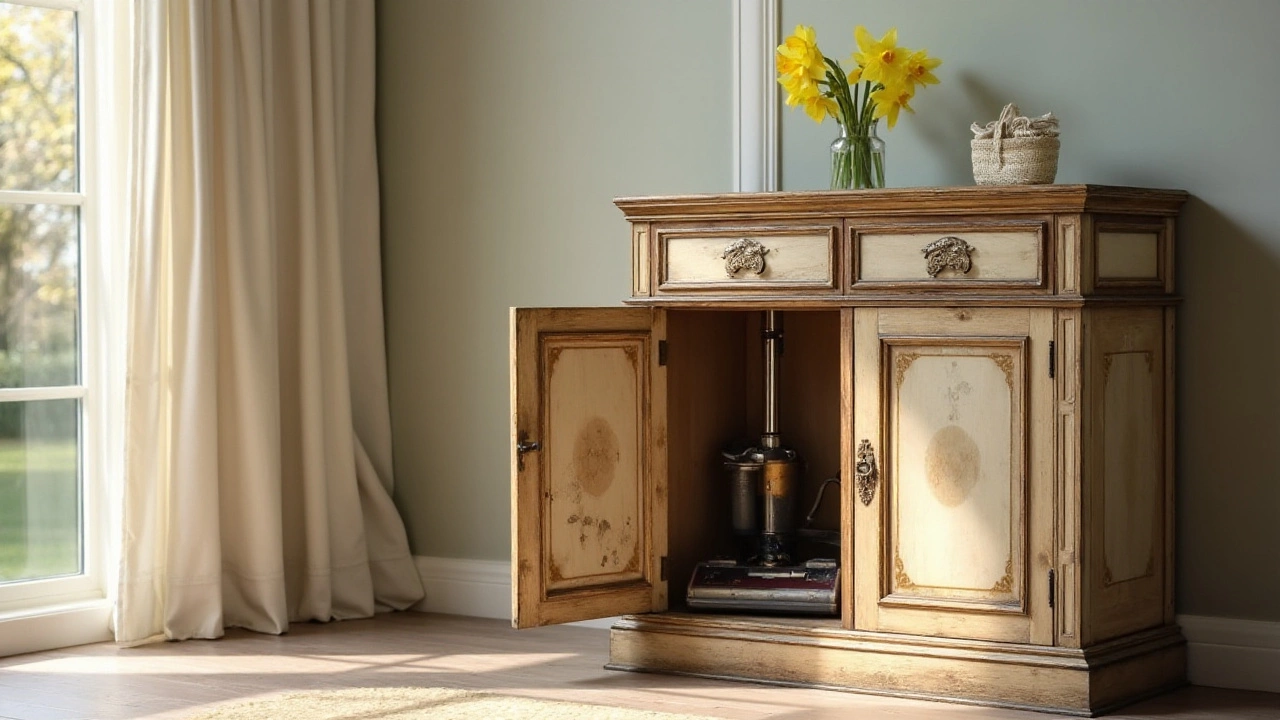
Maintaining Vacuum Accessibility
Ensuring easy access to your vacuum cleaner isn't just about avoiding the frustration of deep closet dives. It's about convenience, efficiency, and keeping your home spick-and-span without the hassle. Placing your vacuum in a spot that’s quick to reach will likely lead you to use it more often, keeping dirt and dust at bay with less effort. Most people appreciate having a vacuum readily available so that it's not just reserved for 'cleaning days' but for any quick clean-up needs that pop up during the week.
Strategic Placement
Think about the places in your home that accumulate the most dirt or receive the most traffic. High-traffic areas like the living room or kitchen usually benefit from having a vacuum nearby. Storing it in a closet near these areas might make the difference between putting off a chore and getting it done quickly. For those with pets, especially, hair and dander can seem to appear out of nowhere, making vacuum accessibility not just a preference but a necessity. A study by the American Cleaning Institute highlighted that homes with pets were twice as likely to use a vacuum cleaner at least once a day.
Dedicated Spaces
If you have the option, designating a specific spot just for your vacuum storage can streamline your cleaning routine. This might mean a slim closet with custom shelving where the vacuum’s attachments have their own place, helping you keep everything organized and in one location. Not only does this allow for better accessibility, but it also extends the life of your vacuum cleaner by keeping its parts and accessories together and easy to find. With all parts tidily stored, there's less chance of losing essential bits, thus saving time and money on replacements.
"The best way to maximize your cleaning efficiency is to store items where you use them," says Sally Smith, a renowned professional organizer. "Having your vacuum stored conveniently means you’re more likely to tackle tasks as they arise."
Consider Wall Mounts and Docking Stations
For those with handheld or upright models, wall-mounted or docked vacuum designs offer a hit of innovation mixed with practicality. Charging docking stations that act as both charger and holder can turn an ordinary storage space into a multifunctional area that recharges your tools. These not only keep your vacuum charged and ready but also eliminate the need for additional floor space. Installation is usually straightforward and often requires no more than a couple of screws, making it a doable project for most DIY enthusiasts.
Ultimately, keeping your vacuum accessible ensures that cleaning doesn’t become a daunting task that looms overhead but remains a manageable and integrated part of daily routine. This availability can instantly turn a chore into an effortless task, saving you precious time and keeping your living space fresh and clean. Whether tucked neatly on a wall or stationed strategically in a closet, a well-placed vacuum is the secret to swift, stress-free home maintenance.
Storage Mistakes to Avoid
Storing your vacuum cleaner can sometimes feel like an afterthought, but making the wrong choices can lead to inconvenience and even damage over time. One common misstep is storing the vacuum in a damp area, such as a basement or a laundry room. Humidity and moisture can corrode metal parts and damage electrical components, shortening the lifespan of your cleaner. Always choose a dry, well-ventilated space to store your vacuum, to ensure you’re not setting it up for rust and wear.
Another mistake people often make is placing the vacuum in a hard-to-reach spot. While it might seem logical to stash it away in an attic or a tightly packed closet, such locations can deter you from regular cleaning due to the hassle of retrieving the vacuum. It’s beneficial to keep it in a more convenient place, like a broom closet or an accessible corner, which encourages frequent use and keeps your home tidy. Accessibility is key when considering home organization solutions.
In the quest to save space, many are tempted to wind cords improperly or force attachments into tight spaces, which can lead to frayed wires or bent nozzles. Manufacturers advise against coiling cords too tightly as it can damage the insulation and cause electrical hazards, so it's wise to let the cord hang loosely or use built-in cord reels if available. Similarly, forcing attachments into position can break clips or snap the hoses, meaning it's important to handle with care and store these components separately if needed.
"Treat your tools with respect, and they'll return the favor with years of reliable service," says cleaning expert Melissa Maker in her resourceful home maintenance guide. Proper storage is as important as regular maintenance, ensuring that tools like vacuums remain in excellent working condition.
Don’t forget about regular maintenance checks. Often the vacuum sits in storage without being checked for clogs or filter replacements. Neglecting routine upkeep, like changing bags or clearing brushes of debris, can lead to diminished performance and even damage the motor. Set a reminder to inspect your cleaner periodically; this habit can dramatically extend its life and ensure it works efficiently every time you need it.
Avoid these common pitfalls, and you’ll find that cleaning tools become far more reliable and easy to use. Simple changes in your storage strategy can make a significant difference in how long your vacuum lasts and how effectively it cleans. By focusing on conditions like dryness, accessibility, and proper coiling or placement methods, you're not just storing a tool – you're preserving an investment in your home's cleanliness.

